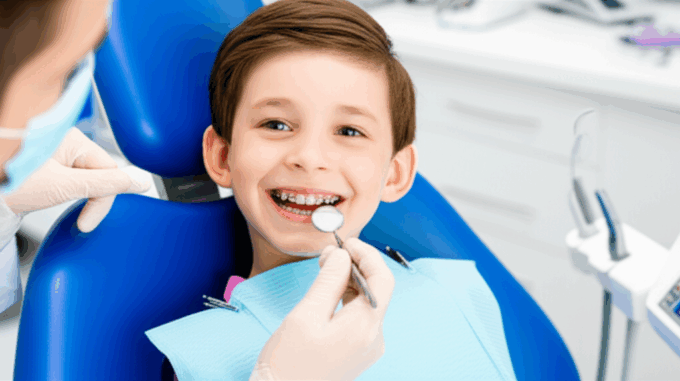Dental experts agree that while there isn’t a single “magic” age when every child needs braces, early evaluation is key to determining the optimal time for orthodontic intervention. This proactive approach to dental health can significantly impact not only a child’s smile but also their overall oral function and confidence. Understanding when to seek an orthodontic consultation can help parents navigate this important aspect of their child’s development.
The American Association of Orthodontists’ Recommendation
The American Association of Orthodontists (AAO) recommends that children have their first orthodontic screening by the age of seven. By this age, most children have a mix of primary (baby) and permanent teeth, allowing an orthodontist to assess potential problems with jaw growth and tooth alignment. This early evaluation doesn’t necessarily mean immediate treatment. Instead, it provides valuable insights that can inform future decisions, such as interceptive orthodontics or simply keeping a watchful eye on developing issues.
Why Early Evaluation Matters
Several factors make an early dental assessment crucial. Children’s jaws are still developing, and identifying growth-related issues at this stage can be easier and more effectively corrected. Problems like posterior crossbites, where upper teeth sit inside the lower teeth, or anterior open bites, where the front teeth don’t touch when biting down, can often be addressed more successfully when the child’s jaw is still growing. An orthodontist can guide the jaw’s development, potentially avoiding more complex and extensive treatments later on.
Furthermore, early intervention can sometimes prevent the need for tooth extractions. If permanent teeth are erupting in crowded spaces, early orthodontic efforts might create adequate room, thus preserving all of the child’s natural teeth. Addressing issues like severe overcrowding, underbites, or overbites early can also improve chewing function, speech clarity, and reduce the risk of abnormal wear on the teeth.
Identifying Signs That May Warrant an Earlier Consultation
While the age of seven is a guideline, parents should be aware of specific signs that might indicate a need for an earlier dental orthodontic evaluation:
Early or Late Loss of Baby Teeth: If baby teeth are lost significantly too early or too late, it can affect the eruption patterns of permanent teeth.
Crowded, Tilted, or Overlapping Permanent Teeth: As permanent teeth start to come in, if they appear crowded or are already crooked, it’s a sign that space may be an issue.
Difficulty Chewing or Biting: If a child struggles to bite into foods or experiences discomfort while chewing, it could indicate a bite problem.
Mouth Breathing: Persistent mouth breathing can sometimes be associated with underlying skeletal issues that affect facial development and tooth alignment.
Protruding Teeth: Teeth that stick out significantly may be more susceptible to injury.
Jaw that Shifts or Makes Noises: If a child’s jaw pops, clicks, or visibly shifts when opening or closing their mouth, it could point to a temporomandibular joint (TMJ) issue or a bite problem.
Speech Difficulties: Certain orthodontic problems can directly impact speech and pronunciation.
Understanding Different Treatment Phases
Orthodontic treatment for children often falls into two main phases:
Phase I Treatment (Early Intervention): This phase typically occurs between the ages of 7 and 10, targeting specific problems that exist in younger children while they still have a mix of primary and permanent teeth. The goal is to guide jaw growth, correct crossbites, create space for erupting permanent teeth, and improve oral habits. This is often referred to as “interceptive orthodontics” and can involve appliances like expanders or limited braces. The objective isn’t necessarily to achieve a perfectly straight smile at this stage, but to create a healthier foundation for the permanent teeth.
Phase II Treatment (Comprehensive Treatment): This phase usually begins when most or all of the permanent teeth have erupted, typically between the ages of 11 and 13. At this point, the orthodontist focuses on straightening the teeth and achieving a final, aesthetically pleasing, and functional bite. If Phase I treatment was completed, Phase II often becomes simpler and shorter.
The Benefits Beyond Aesthetics
While a beautiful, straight smile is a significant outcome of orthodontic treatment, the benefits extend far beyond appearance. Proper dental alignment leads to:
Improved Oral Hygiene: Straight teeth are easier to clean, reducing the risk of cavities and gum disease.
Better Chewing and Digestion: A well-aligned bite ensures efficient chewing, which aids in digestion.
Reduced Risk of Injury: Protruding teeth are more vulnerable to chipping or breaking during accidents.
Enhanced Speech: In some cases, orthodontic correction can improve pronunciation.
**



